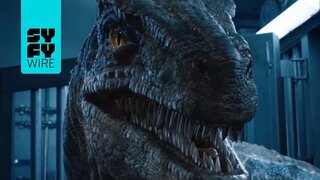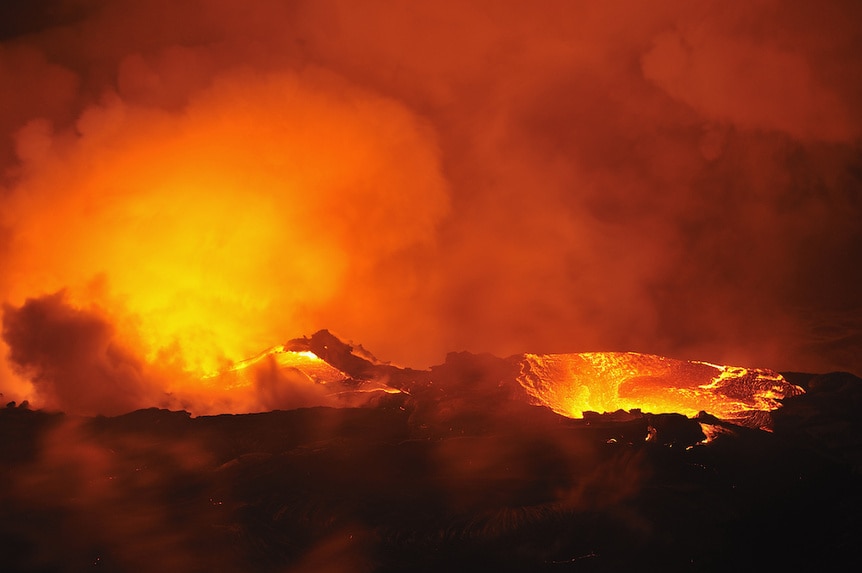Molten Eruptions & Volcanic Winters May Have Led to the Rise of the Dinosaurs
Volcanic eruptions cracked open Pangaea and cleared the way for the dinosaurs.
In Universal’s Jurassic Park: Fallen Kingdom, a massive volcanic eruption threatens to cover Isla Nublar in fire and send the dinosaurs into oblivion for the second time. It would have been a poetic end, because 200 million years ago, volcanic eruptions triggered a global extinction event and cleared the way for the age of dinosaurs. The end-Triassic extinction wiped out three-quarters of life on Earth, but precisely how that happened is being challenged by a new study published in the Proceedings of the National Academy of Sciences.
For years, scientists have tied the end-Triassic extinction to a series of incredible volcanic eruptions in what’s known as the Central Atlantic Magmatic Province (CAMP). At the time, the landmasses were gathered into the supercontinent Pangaea, and the first dinosaurs were struggling to grab a toehold. Eruptions in the CAMP region carried on for about 600,000 years and contributed to the breakup of the continent.
The conventional picture is one of eruptions lasting thousands of years, dumping greenhouse gasses like carbon dioxide and methane into the air. The addition of all those greenhouse gasses would have ramped up the temperature and pushed life to the brink, but new data suggests that Triassic life was wiped out not by fire, but by ice.
200 million years Ago, volcanoes covered the world in ice, then fire
The new study focused on CAMP deposits in Morocco, the Bay of Fundy in eastern Canada/US, and the Newark Basin in New Jersey, and found that the eruptions were briefer and more intense than previously thought.
Instead of slow and steady eruptions lasting tens of thousands of years, the deposits reveal five distinct volcanic pulses, each lasting less than 100 years, spread over a period of about 40,000 years. They could tell that each eruption was shorter than a century because the magnetic properties of the deposits were all aligned. If the eruption had gone on for longer, the magnetic properties of the deposits would have been affected by Earth’s drifting magnetic poles.
If the eruptions were slow and steady, then carbon dioxide would build up in the atmosphere at a consistent pace, leading to a warming trend and an extinction event. If, instead, the eruptions were brief but powerful, a different set of circumstances would play out. Carbon dioxide doesn’t build up as quickly and the sulfate particles play a larger role. When sulfate particles get launched into the atmosphere, they act like a whole bunch of teeny tiny mirrors, reflecting sunlight back into space. Unlike carbon dioxide, sulfates don’t take a long time to get warmed up, they get to work right away. If you dump enough of them into the air all at once, you can dramatically drop the global temperature over the course of years or decades.
In the fullness of time, the CAMP eruptions did cause the planet to warm, but, according to the new study, not until after 75% of all life was cold toast. However things played out, destructive volcanic eruptions wiped the biological slate almost totally clean and opened up ecological niches for the newly evolved dinosaurs.
Prehistory repeats itself in Jurassic Park: Fallen Kingdom, available now from Universal Pictures.















































